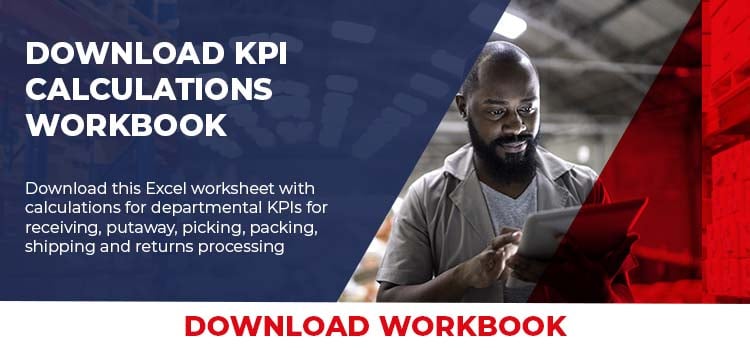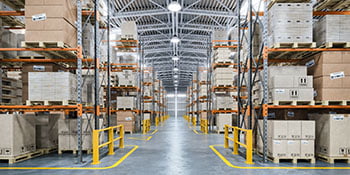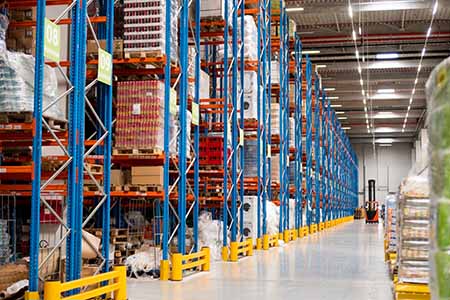A backorder is a customer order for a product from a retailer or supplier that cannot be shipped immediately or by the promised date. Simply stated, backorders are a temporary out of stock condition. An order is not a sale that you can take to the bank until the item is shipped or picked up at the store, the transaction is invoiced, and funds are deposited.
The rate of backorder – the percentage of order lines that cannot be shipped out of the total items ordered for the day - is an excellent measure of your inventory management and the customer service you are providing. An even better measure is the initial customer order fill rate, discussed below.
Importance of Preventing Backorders
If you’re an ecommerce company, you may say, “we don’t accept backorders, so that solves a big problem.” But it doesn’t. Backorders typically only occur on the better selling items - you never have backorders for the slow-moving items in stock. An unexpected rush of orders can cause problems for any ecommerce company. Out of stock and backorders can cost companies 10% or more in lost sales.
If you’re a wholesaler or distributor to Amazon, Walmart, and most big-box retailers, they will drop your product line if you can’t consistently fill their purchase orders on an agreed upon delivery date. Not meeting their vendor compliance policies will mean paying charge-backs for late delivery.
For ecommerce and omnichannel retailing, there are substantial potential penalties for not adhering to The Federal Trade Commission’s Mail, Internet, or Telephone Order Merchandise Rule issued in 1975 and amended in 2014. The Rule:
“requires sellers who solicit buyers to order merchandise through the mail, via the Internet, or by phone to have a reasonable basis to expect that the sellers can ship within the advertised time frame, or, if no time frame is specified, within 30 days.”
The Rule also requires that, when a seller cannot ship within the promised time, the seller must:
"obtain the buyer’s consent to a delay in shipping or refund payment for the unshipped merchandise.”
Developing these customer-oriented policies as FAQs on your website is a best practice every company should adhere to.
Customers that shop via ecommerce and omnichannel businesses are very opportunistic. They comparison shop and see your in-stock products on their phones and other devices before they even go to your store or order. If you’re not in stock when the customer wants the item, the chances are you’ll never get the order.
Our studies show that backorders can erode profits and incur have high costs of $15 to $20 per backorder fulfillment. Costs include customer service calls for “Where is my backorder?” If you already shipped a partial order, you may also incur additional costs for picking backordered items. Picking an order for a second or third time will add additional costs for picking, packing, shipping costs and packing material costs.
Additionally, you lose any potential for shipping revenue that you may have earned. Backordered items often have a higher return rate. There are additional costs for expediting or air freighting backordered product, upgrading customer outbound shipments at your cost to get the backorders there faster, and for inventory control personnel spending significant time expediting product.
However, the biggest costs to your business are that customers experiencing backorders may not give you future chances with their orders and you lose their lifetime-value. 
Practical Solutions to Backorders
Inventory is among the largest balance sheet assets in most companies. You can’t be in stock on every item, all of the time, without destroying your inventory turnover and increasing inventory levels.
Here are 8 best practices and practical solutions to reduce backorders and stockouts and optimize inventory:
1. Understand how merchandise statistics affect profitability
Every company should analyze the cost of being out of stock and strategize how to optimize inventory levels. We recommend reporting on six key inventory metrics, including initial order fill rate, final order fill rate, and order cancellation rate.
Another aspect, as we discussed above, is to consider what backorders and out of stock instances cost your company in direct costs, lost sales, and potential customer loss. This should be an early study objective and drive your overall objectives.
2. Identify reasons for out of stock and backorders
Analyze your stock outs and backorders by product and SKU. What are the reasons for being out of stock? Here are some common reasons:
- No reliable sales history to base plans or projections on: Fashion items or new items fall into this category. It is hard to predict how many of an item you will sell without historical data.
- Lead time and re-orderability: How easily and quickly can you reorder items as your inventory depletes? Fashion and new item buyers often have to estimate and take a risk on how many units they can sell in a season because there may be limited or no ability to reorder from the vendor.
- Proprietary product: Typically, a proprietary product has a long lead time and often requires the purchase of high quantities with limited re-orderability.
- Late delivery from the vendor: It happens - even if they committed to the delivery date.
- Items appear in more promotions than originally planned: Purchase orders are placed months to a year in advance. If an item is added to a promotion without inventory considerations, the quantities are likely insufficient.
There are two other contributing factors which make companies less nimble:
- Companies often use massive spreadsheet systems to compensate for inadequate internal systems to project reorders and integrate into purchasing systems. Processes need to be streamlined to identify products needing reordering, get purchase order approvals, and integrate to electronic communication to vendors through EDI and other systems.
- Inventory control departments are way understaffed considering the number of products and SKUs involved and the multiple promotions they appear in.
3. Implement a 6-step process for improving inventory management
There are a number of different departments that are stakeholders in managing inventory. To improve inventory results, give all of the stakeholders a say in setting the objectives and evaluation.
Start the process by reviewing key inventory objectives, overall, and what they are telling you about your business. We recommend a 6-step process for assessing your inventory systems and developing an action plan for improvement.
4. Perform a freight audit
Review your supply chain and determine where you can reduce costs and time. Outbound freight costs now exceed all the other costs of fulfillment in many companies, including direct and indirect labor, facilities, depreciation and amortization, and packing costs. From an inbound freight perspective, any necessary changes in transportation to expedite purchase orders adds enormous cost.
Read: How to Reduce Fulfillment Expenses by Streamlining Your Supply Chain
5. Vendor relations and purchase orders
Develop strong vendor relationships and keep them informed of any changes in your delivery schedules. Are your lead times being maintained by the merchants to reflect any vendor delivery changes that affect customer orders?
Call center and website customer inquiries and FTC processing are all affected by the expected receipt date on purchase orders being maintained continually.
6. Streamline business processes
Evaluate your inventory practices and create an exhaustive document detailing:
- inventory planning
- purchasing
- inventory control
- inventory projection
- overstock liquidation processes
With this document in hand, consider how can these be improved?
7. Improve inventory needs projection
Two major systems objectives can improve backorder and out of stock conditions:
- Develop analysis and reporting to aid the rebuying analysis and decision-making process. An example is creating an exception report of products that are potentially under and overstocked by product and SKU.
- Develop time-phased item forecasting, which takes into account the product sales by location and any promotions the products appeared in. This forecasting then compares sales to the on-hand and vendor on-order inventory. Once forecasting is complete, determine how many weeks in the future will the stock out occur? Compare this to vendor lead time and consider how many weeks it will take for the item to get back into stock?
If your inventory forecasting is not taking into consideration vendor lead time by item, you run the potential to be out of stock before you can get the merchandise replenished. Identify what inventory planning and control systems functions are needed to optimize inventory levels and reduce the time to keep plans up to date.
8. Report initial customer order fill rate weekly
Management’s weekly report should include the initial customer order fill metric - or the percent of orders shipped complete without any backorders. This is better than the backorder rate because it gives an indication of how many customers are affected over time. Show this not just for the week, but by category for a 12 month rolling period.
Additionally, backorder calculations are a one-day number and are not generally retained on an inventory system to see what the cumulative backorder rate is.
Summary
Improving inventory management and reducing costly backorders should be a strategic objective of every company because it has broad implications for profitability and customer service. As product offerings become much larger and internet marketing more complex, having effective inventory organizations, best practices, and up-to-date systems in place is imperative.






SHARE